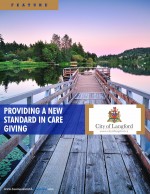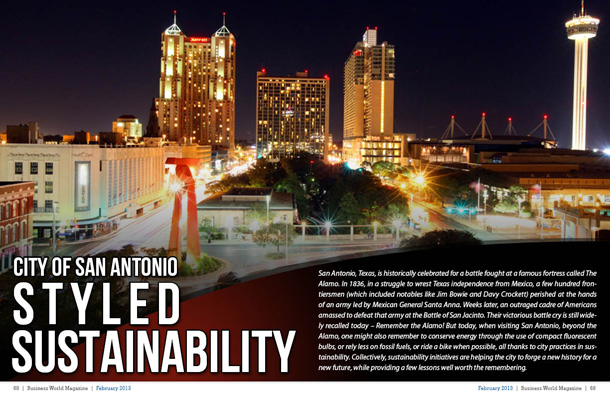

“Moving Forward, Rather than Staying Stagnantâ€
City of Langford revels in growth with unique, partnership-focused mindset
 Chronic grid-lockers in Ottawa and Washington, D.C., get this.
A governing body in a western British Columbia municipality has consistently found ways to solicit input across a swath of oft-disparate interests, blend those opinions into a workable consensus and use a spirit of cordiality to develop initiatives and improvements for local residents.
As a result, the city of Langford has not only attracted and navigated through a stretch of ongoing population growth, but it’s managed to reshape some outside perceptions along the way.
“Everybody used to view Langford as the armpit of the region and now it’s totally reversed,†said Jim Bowden, the city’s administrator for the last six years. “Nobody would ever want to admit that they lived in Langford, and now everybody is proud to call Langford home.â€
Bowden beams audibly when discussing the city’s burgeoning statistics, which include a 30 percent boost in the number of full-time residents in the last five years – averaging out to a 6 percent annual growth in that period – and a forecast for similar enhancement for the foreseeable future.
The area the city now occupies was settled 163 years ago by Capt. Edward Langford on behalf of the Puget Sound Agricultural Company. The official incorporation, however, didn’t come until 1992.
The population began its double-digit percentage rise between 2001 and 2006, jumping 19.2 percent to reach 22,459. It rose another 30.1 percent to get to 29,228 by the time the 2011 federal census count was taken, and Bowden said the 2014 estimate is closer to 32,000.
The mix of people arriving, Bowden said, includes retirees from the eastern part of the country, along with those who work in the downtown core of nearby Victoria – about 15 kilometers to the east – and seek affordable single-family housing away from the bustle of the provincial capital.
“It’s a little bit cheaper out here,†he said, “and we’re working on building many of the amenities that people are wanting.â€
About 50 percent of Langford’s working population commutes into Victoria, Bowden said, and many others are employed at the sprawling Canadian Forces Base Esquimalt – which houses frigates, submarines and tugboats, along with a destroyer, as a part of its active fleet.
The city also has a significant presence in the retail sector and the home building industry, which provides a lure for outsiders to visit and a chance for residents to both live and work locally. The city is currently working on initiatives to encourage high tech and light industrial businesses to locate in Langford to help grow the economy and provide additional jobs for its residents.
Bowden works closely with Langford’s municipal engineering department, which has 17 employees and is split into parts dedicated to construction and public works. The department is charged with construction activities related to subdivision and capital projects/public infrastructure, as well as road maintenance and repairs, city beautification efforts and the public trolley transportation program.
Its 2014 operating budget is $6.5 million and its budget for capital projects is $7.5 million, but the set-up is unique in that all traditional public works elements are subcontracted to a private company.
“We’re very fortunate that we have a very progressive council that is wanting to see this growth and it’s encouraging it and gives us direction to find innovative and flexible ways to get the job done,†Bowden said. “It creates a very exciting atmosphere for staff here, with the fact that council encourages us to be innovative and think of ways to do things quicker, faster, cheaper and better.â€
Many infrastructure projects have been funded through partnerships with other pertinent branches of government, and Bowden said the development-specific community has responded well to the collegial approach emanating from a council that’s been in place for nearly two decades.
“We meet with the development community at least once a month to talk to them about how we can improve, what we can do better, and they ask us how they can help,†he said. “It’s invaluable because of the speed of growth. We talk about all the issues that come up related to development, and we figure out solutions together, rather than as if we were the enemy trying to regulate their business.
“We see them as partners and they see us as partners.â€
Upon incorporation, the city acquired many infrastructure elements that had been under the auspices of a regional district, so cataloguing those assets and performing maintenance tasks to get them up to necessary levels has been a priority item in the last few years. Going forward, the focus will include supplying amenities being asked for by a younger, more active population base as well as those appealing to active seniors.
A series of community open houses was held to discuss recreational priorities, Bowden said, and the city established a partnership with Rugby Canada, which established its national headquarters office in Langford. The city is building a high-performance gymnasium for use by both that organization and others, and it has an agreement with a local high school which allows for reciprocal use of turf fields.
The Westhills Arena and Langford Lanes bowling facility are together in a building called the Sportsplex that was built with a grant from Infrastructure Canada. The grant funds were split into three even parts assumed by the federal, provincial and municipal governments, respectively, and Langford’s portion is offset by a long-term lease entered into with the bowling operator.
The ice surface at the arena is maintained free of charge after an agreement that allowed the company which installed the ice – Accent Refrigeration Systems – to maintain an office in the building.
Similar to public works, Bowden said, all recreational operations are contracted privately.
“City Centre Park actually runs at pretty well break-even, which is unusual for a recreational facility,†he said. “We receive additional revenue from the bowling alley, over and above, which pays for our mortgage and all our operating costs for that system.â€
And neither Bowden nor his colleague, City Engineer Michelle Mahovlich, expect the out-of-the-box approach to development, funding and all-around collegiality to drastically change anytime soon.
“I expect much more of the same,†Mahovlich said. “Our growth will continue to speed along. We’ve gone through some tough times in the last few years – although most people have – and we’ve continued to plug along. We’ve been very fortunate there and I think we can attribute it to our progressive council and a supportive community.â€
Bowden agreed, endorsing the idea that Langford is a unique model to which others strive.
“Our community is a very proud community,†he said. “They’ve come from humble beginnings and have grown into this beautiful place that’s vibrant and progressive, and they take very great pride in that. They’re very unified in their approach and very protective of each other. It’s a very unique atmosphere to work in, to see a community so united.
“It’s not only the council, it’s the whole 32,000 residents that seems united with a general focus on moving forward, rather than staying stagnant.â€
AT A GLANCE
WHO: City of Langford
WHAT: Twenty-two-year-old municipality that was home to 29,228 residents, according to the 2011 federal census, and was estimated near 32,000 residents in mid-2014
WHERE: On Vancouver Island, along the western edge of British Columbia – bordered by Highlands (north), View Royal (northeast), Colwood (southeast) and Metchosin (southwest)
WEBSITE: www.CityofLangford.ca








